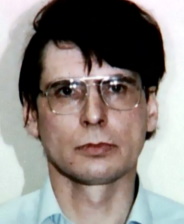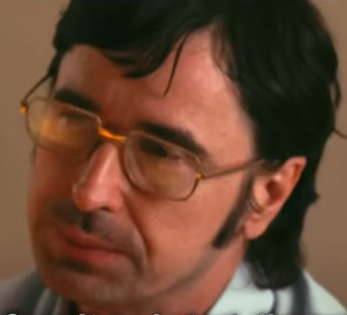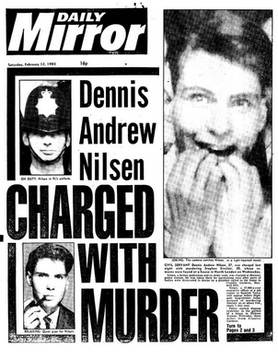
1945 - 2018
Dennis Andrew Nilsen
Summary
Name:
Nickname:
The Muswell Hill MurdererYears Active:
1978 - 1983Birth:
November 23, 1945Status:
DeceasedClass:
Serial KillerVictims:
12+Method:
StrangulationDeath:
May 12, 2018Nationality:
United Kingdom
1945 - 2018
Dennis Andrew Nilsen
Summary: Serial Killer
Name:
Dennis Andrew NilsenNickname:
The Muswell Hill MurdererStatus:
DeceasedVictims:
12+Method:
StrangulationNationality:
United KingdomBirth:
November 23, 1945Death:
May 12, 2018Years Active:
1978 - 1983bio
Dennis Andrew Nilsen was born on November 23, 1945, in Fraserburgh, Aberdeenshire, Scotland. He was the second of three children in his family. His parents were Elizabeth Duthie Whyte and Olav Magnus Moksheim, who eventually adopted the surname Nilsen. Olav Moksheim had been a Norwegian soldier who came to Scotland in 1940 as part of the Free Norwegian Forces during World War II.
Nilsen's early family life was challenging. His parents' marriage was strained. Olav was often away due to his military duties and was not involved in domestic life. Elizabeth felt that she had rushed into marriage and, after having three children, she decided to divorce Olav in 1948. Elizabeth's parents supported her after the divorce, which made life easier for her and the children.
As a child, Nilsen was quiet but enjoyed adventures. He recalled happy memories of family picnics in the Scottish countryside. He had a close bond with his grandfather, who would carry him on his shoulders during their long walks along the harbor and beach. These moments were very special to him, and he described his grandfather as his protector.
This happy childhood phase ended when his grandfather passed away in 1951 from a heart attack. Nilsen was only five at the time but remembered vividly being taken to see his grandfather in an open coffin. This experience left a significant impact on him and marked the beginning of a transformation in his personality. After his grandfather's death, Nilsen grew quieter and withdrawn. He often spent time alone at the harbor and felt neglected at home compared to the attention his siblings received.
In the years that followed, Nilsen faced more changes. His mother remarried and had four more children. They moved to a new town, Strichen, in 1955. Nilsen initially resented his stepfather but gradually learned to respect him. During this time, Nilsen began to realize he was gay, a discovery that brought confusion and shame. He kept his sexual orientation to himself and struggled with feelings of attraction toward boys, including a troubling incident involving his younger sister.

Throughout his teenage years, Nilsen felt stifled by life in Strichen. He joined the Army Cadet Force at 14, seeking an escape from his surroundings. His school performance was good, and after completing his studies in 1961, he briefly worked in a canning factory. Soon after, he decided to join the army to train as a chef. Nilsen enlisted in September 1961 and began training with the Army Catering Corps.
During his time in the army, Nilsen excelled and enjoyed the travel opportunities. His latent sexual feelings began to surface, but he kept them hidden, fearing exposure. He eventually served in various locations, including Germany and Aden. His experiences in the army would shape his complex personality further, planting seeds for his later life decisions.
After completing his military service in 1972, Nilsen returned to Scotland to consider his next steps. He struggled to find a stable path and his relationships with family became strained. His experience in the army and his unresolved feelings about his identity continued to affect him as he moved to London in search of a fresh start.
murder story
Between 1978 and 1983, Dennis Nilsen murdered at least twelve young men and boys. Most of his victims were homeless or gay men, lured to his home with offers of food, drink, and shelter.
Nilsen killed his first victim, 14-year-old Stephen Holmes, on December 30, 1978. After inviting Holmes to his home, he strangled the boy and then drowned him in a bucket of water. He kept Holmes' body under the floorboards for several months before burning it on a bonfire.

After Holmes, Nilsen attempted to murder several others. He tried to kill Andrew Ho, a student from Hong Kong, but Ho escaped and reported the incident without pressing charges. In December 1979, Nilsen killed 23-year-old Kenneth Ockenden. He strangled Ockenden using the cord from his headphones and later took photographs of the body before hiding it beneath the floorboards.
His next victim, 16-year-old Martyn Duffey, was killed in May 1980. After inviting him in for a meal, Nilsen strangled Duffey and drowned him in his kitchen sink. Nilsen kept Duffey's body for two days before placing it under the floorboards.
Throughout 1980, Nilsen murdered several more men, keeping their bodies hidden for weeks or months. He would eventually dissect the bodies, often burning the remains in a bonfire. The smell of decay from the bodies would sometimes fill his flat.

Nilsen moved to another flat in 1981, where he continued his killings. He murdered John Howlett in March 1982. After a struggle, he drowned Howlett in his bathtub. His next victim was Graham Allen, who was also strangled and dismembered.
On January 26, 1983, Nilsen killed his final victim, 20-year-old Stephen Sinclair. After inviting Sinclair to his flat, he strangled him with a ligature before performing his ritual of bathing and posing the body.
Nilsen's crimes were uncovered on February 8, 1983, when a plumber discovered human remains blocking the drains in his flat. The police were called, and Nilsen was soon arrested. He later confessed to the murders, admitting to having killed fourteen to sixteen men and boys.
Nilsen was charged with six counts of murder and two of attempted murder. In 1983, he was convicted and sentenced to life in prison. He remained incarcerated until his death in 2018.